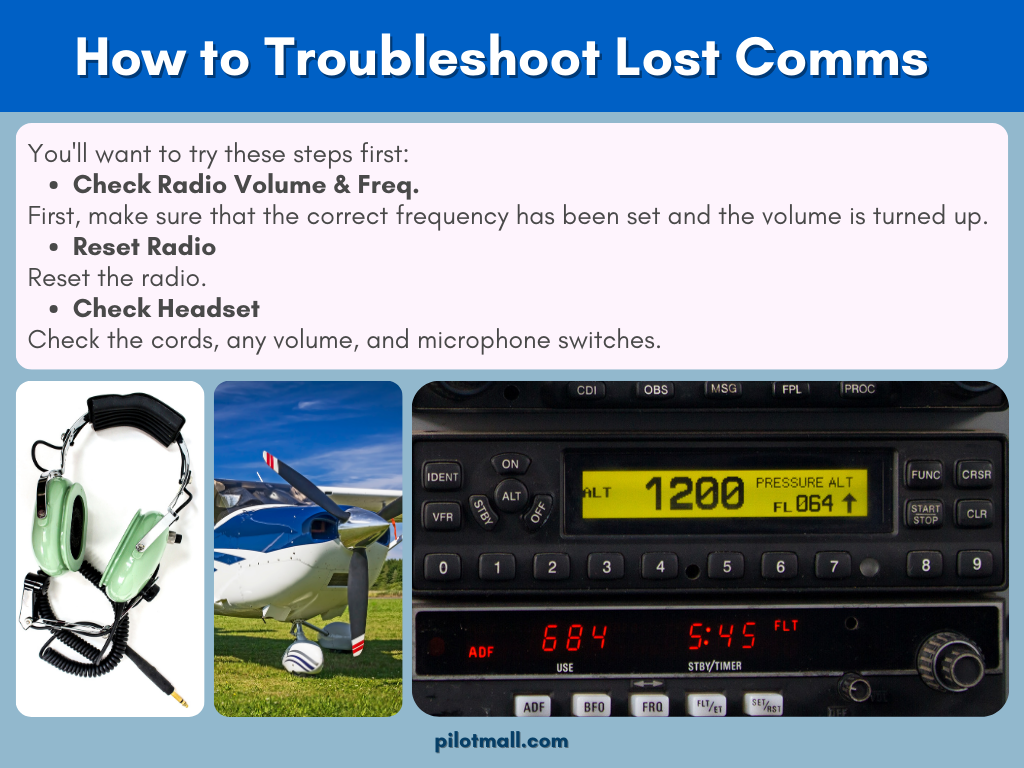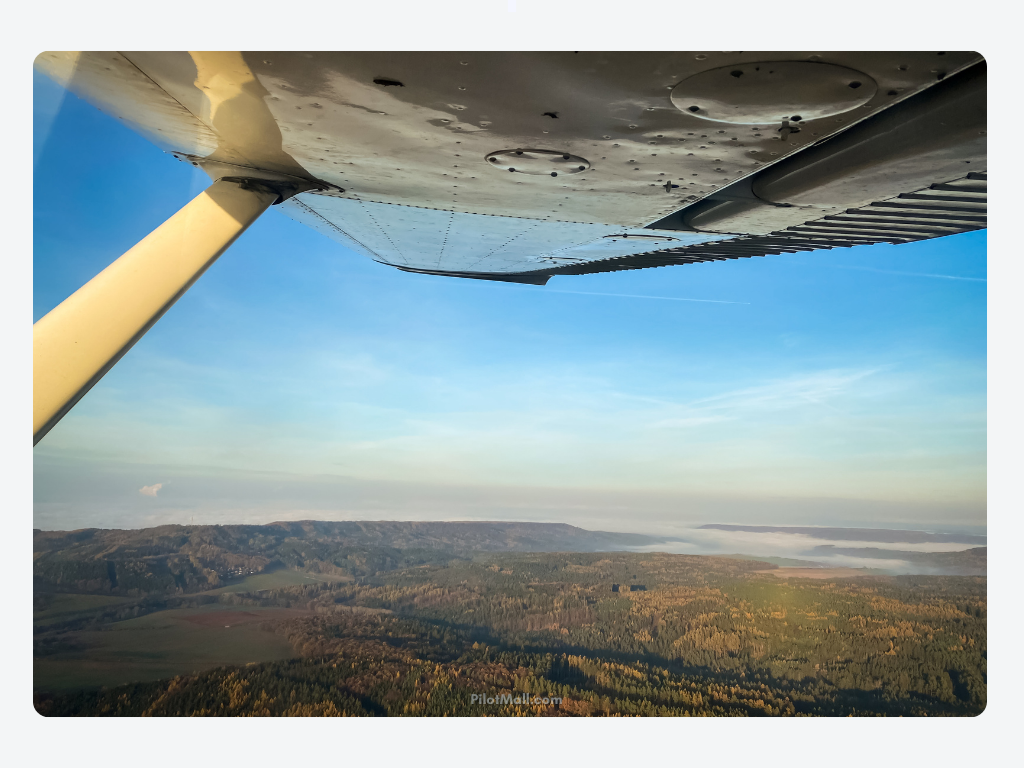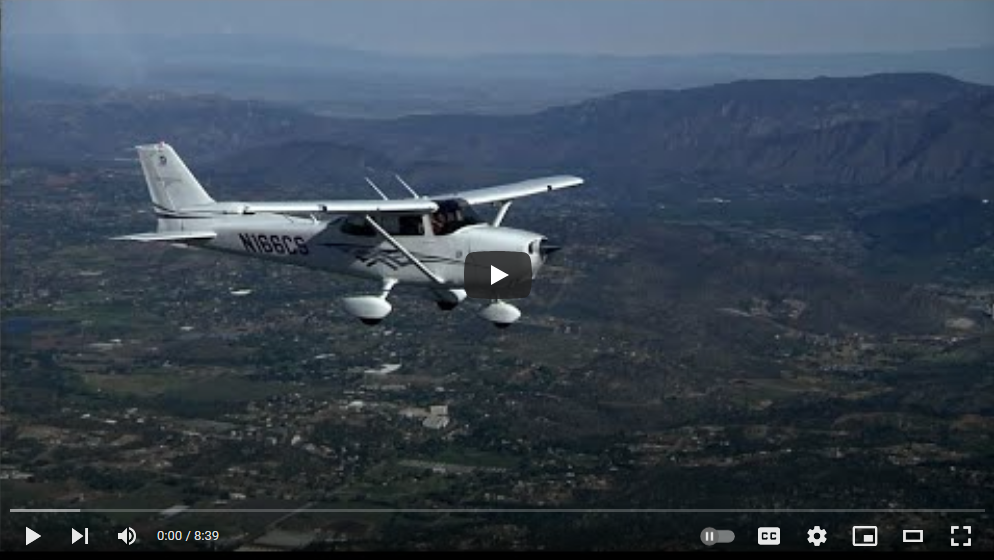Lost Comms on IFR Flight (What to do & Procedures to Follow)
Picture this, you have your IFR rating and you're on an IFR flight plan down to Florida for some sun and relaxation on the beach. You're not too far from your final destination, and you decide to get in touch with ATC, but you notice that something isn't quite right—you've lost comms. In this article, we’ll cover what to do if communication is lost during an IFR flight plan. We will discuss lost comm procedures and more!

Featured Pilot Gear
Browse our selection of high-quality pilot supplies! Your purchase directly supports our small business and helps us continue sharing valuable aviation content.
Picture this, you have your IFR rating and you're on an IFR flight plan down to Florida for some sun and relaxation on the beach. You're not too far from your final destination, and you decide to get in touch with ATC, but you notice that something isn't quite right—you've lost comms.
While even imagining this situation can make a pilot feel uneasy, there are steps that can be taken to deal with it and to safely reach your destination.
In this article, we’ll cover what to do if communication is lost during an IFR flight plan. We will discuss lost comm procedures and more!

How to Troubleshoot Lost Comms
Before assuming the work, it's best to troubleshoot and eliminate any easily fixable reasons behind the loss of comms. (The FAA provides a section of documentation if emergency procedures are applicable.)
You'll want to try these steps first:
-
Check Radio Volume & Freq.
First, make sure that the correct frequency has been set and the volume is turned up. Try making a second call to the controller, if you still hear nothing move on to the next step. -
Reset Radio
Try switching to com #2, if you hear nothing then reset the radio. -
Check Headset
Check the cords, any volume, and microphone switches.
Re-establish Radio Contact
If you experience radio failure, you will want to go through and try to re-establish communications with air traffic control.
- Previously Assigned Frequency: go back to the last frequency you were able to communicate with ATC in order to test your equipment.
- Try another frequency like FSS.
- Try establishing contact with another aircraft and ask them to give your callsign to ATC to request a new frequency.
- Try 121.5 (guard frequency).
- Try VOR frequencies(using the NAV radio)
- If you are unable to re-establish communication and have exhausted all other possible options squawk 7600 for lost comms.
Use Digital Options
Though this is not explicitly stated in publications regarding two-way radio communications failure, we live in a digital era, and a lot of options are afforded to us.
- Consider owning/using a backup radio in the event of radio failure.
- Have a phone with a working signal? Use it to call tower.

Lost Comms in VFR Conditions
If you lose communications during a flight but have visual meteorological conditions (even if on an IFR plan) FAR 91.185 (b) states to:
If the failure occurs in VFR conditions, or if VFR conditions are encountered after the failure, each pilot shall continue the flight under VFR and land as soon as practicable.
Lost Comms at Nighttime (VFR)
If it is after sunset, but VFR conditions are present, fly towards the airport, and search for the ALDIS lamp signal to be given approval to land.

Lost Comms IFR Conditions
If the failure occurs in IFR conditions follow these steps:
AVEnue of FAME
There is an acronym used in aviation to help pilots remember how to deal with a two-way radio communications failure while under IFR operations.
The acronym is as follows:
- A - Assigned Route: Continue to fly the last route assigned and the altitude or flight level that you were given by ATC (Air Traffic Control).
- V - Vectored: If you were given vector clearance by ATC, continue on the heading you were last assigned before experiencing radio failure.
- E - Expected Route: If you were given an "Expected Further Clearance" by ATC, fly the route and altitude as specified in your last clearance.
- F - Filed Route: If none of the above apply or you never received an assigned route, fly the route that you originally filed in your flight plan.
-
A - Altitude: Maintain the highest of the following altitudes:
- The altitude assigned in your last ATC clearance.
- The minimum alt. for your route as specified on charts.
- The altitude that corresponds to the direction of flight as specified in 14 CFR 91.185 (the FAR regulation governing lost communications).
- M - Minimum: Be aware of both altitude and fuel minimums. Be conscious of the minimum IFR altitude (MEA) for your flight operations.
- E - Expect: Continue to fly the altitude ATC gave you and expect further clearance time.

Leaving Clearance Limit
If the clearance limit is a fix (YES):
You must start your approach from, begin descending, or perform a descent and approach as close to the expected further clearance time as you can if one has been given, or if not, aim for the Estimated Time of Arrival (ETA) that was calculated from the originally-submitted or amended (with ATC authorization) Estimated Time En Route (ETE).
If the clearance limit is not a fix for an approach (NO):
Stay at the expected further clearance time if one has been given, or if not, upon reaching the clearance limit fly towards a fix to start an approach and commence descent or descent and approach as close to the Estimated Time of Arrival as possible that was calculated from the filed or modified (with ATC approval) Estimated Time En Route.
Lost Comms in Landing Pattern
When you first approach the tower check for light gun signals—a green light indicating permission to land on any runway. If the tower doesn't provide a signal, try landing if fuel allows. On your second trip around the tower, clear the runway yourself if there is still no response and land.
Radar Approaches
According to Section 5-10-4:
a. If lost communications instructions will require the aircraft to fly on an unpublished route, issue an appropriate altitude to the pilot. If the lost communications instructions are the same for both pattern and final, the pattern/vector controller must issue both.
Advise the pilot that if radio communications are lost for a specified time interval (not more than 1 minute) on vector to final approach, 15 seconds on a surveillance final approach, or 5 seconds on a PAR final approach to:
- Attempt contact on a secondary or a tower frequency.
- Proceed in accordance with visual flight rules if possible.
- Proceed with an approved nonradar approach, or execute the specific lost communications procedure for the radar approach being used.
Lost Communication Examples
You are flying south from HIJ VOR direct ABC Airport (ABC) on your IFR flight plan. You were assigned 8,000 feet and instructed to expect 10,000 feet in 15 minutes. Your filed ETA at ABC is 1600. The time now is 1530, and suddenly, you experience a two-way radio failure. Your filed route is HIJ to LOMAX, then direct ABC.
In this situation, you need to determine the altitude you should be at immediately. Using the AME (Assigned, Minimum altitude for IFR operations, or Expected) rule, you must select the highest of the three altitudes. In this case, the highest IFR altitude to fly southbound off-route (OROCA) is 12,000 feet.
You should proceed to fly direct to ABC at 12,000 feet.
Following the AVEF order (Assigned, Vectored, Expected, Filed), you had filed HIJ to LOMAX, but you were last assigned direct to ABC. Therefore, you should continue to fly direct to ABC. Once you reach ABC, you'll need to plan your approach based on the available procedures.
Assuming there's an RNAV approach available for ABC, you'll fly the approach. Let's say you're using the RNAV RWY 22 approach. You would fly the initial approach segment, then turn outbound on the published course. In this case, let's assume you're instructed to fly outbound on a heading of 220 degrees.
As you fly outbound, you will descend to the minimum altitude for that segment of the approach. Let's say you can descend to 9,000 feet after reaching the initial approach fix (IAF) LOMAX. You arrive at LOMAX at 1555, so you continue outbound on the approach course to a point where you can start a holding pattern.
You enter the hold, descending to 9,000 feet if you haven't already reached that altitude. The ETA at ABC is approaching, and you aim to leave the hold as close to 1600 as possible. Once you exit the hold, you'll proceed inbound on the approach, following the published step-down altitudes and procedures as if you were cleared for the approach at 1600.
Your ultimate goal is to finish the approach and, if the weather conditions permit it, make a safe landing at ABC.

- What are the lost comms procedures in IFR?
- In IFR (Flight Instrument Rules), lost communications procedures are a set of standardized actions that pilots are supposed to adhere to when they lose communications with air traffic control (ATC).
- These procedures are important to follow to maintain safety and ensure that the aircraft continues to operate in a controlled and predictable manner even if radio communication has been lost.
- Is lost comms in IFR an emergency?
- A Two-way radio communications failure resulting in lost comms in IFR flight is not necessarily considered an emergency situation. It is a challenging situation and will require specific steps to make sure that operations are conducted safely.
- While it's not an emergency in the sense of immediate danger, it is vital for pilots to promptly and accurately follow the lost comms procedures to maintain the integrity of the air traffic system and maintain the safety of their flight.
- What to squawk for lost comms?
- Whether you are flying VFR or IFR, pilots are usually instructed to squawk a specific transponder code. Transponder codes are used to assist ATC in identifying the aircraft of radar and provide separation services. If no code was assigned prior to the aircraft experiencing a communications failure, then pilots should squawk the transponder's emergency code for lost comms, which is 7600.
- NOTE: Make sure to only squawk 7600 if all options and steps to fix and re-establish contact have been exhausted(including using your phone to call tower).
- What altitude do you fly when you have lost communications?
- When a pilot loses contact with ATC in IFR flight, they should follow the AME rule, which stands for: Assigned, Minimum altitude for IFR operations, or Expected.
- The pilot should aim to fly the highest of the three altitudes until they reach a point where they can safely execute an approach procedure or re-establish contact with ATC.
- The higher altitude helps to keep the aircraft at a safe level while navigating through the airspace. If none of the altitudes are specified, the pilot should follow OROCA (Off-Route Obstruction Clearance Altitude) for their direction of flight, which is the minimum safe altitude for off-route segments.
Make sure that issues with your headset aren't one of the reasons you lose communication with ATC by investing in a quality headset with a Bose A30!
 |
Bose A30 Aviation Headset with BluetoothThe Bose A30 represents the pinnacle of aviation technology. With advanced noise cancellation technology, the headset ensures that cockpit noise is minimized, allowing you to focus on communication and critical flight information. The innovative Bluetooth capability allows you to seamlessly connect to your devices, enabling you to stream music or take important calls without compromising safety |
Takeaway
When fighting under IFR operations, the scenario of two-way radio communications failure can be a real head-scratcher. What do you do when your lifeline to air traffic control suddenly goes silent? This can be uncomfortable for even the most experienced pilots. In this article we delved into the essential lost comms procedures to keep your flight on the right track.
Imagine this: you're cruising along on your assigned route, ATC clearance received, your flight plan meticulously plotted, and the weather is playing nice. But then, out of the clear blue, a radio failure occurs. It's like the pilot twist of a thriller movie—unexpected, but manageable. Here is where you much exercise good judgment and lean on everything you learned in your flight training days.
When facing communications failure, remember to first troubleshoot all options, then follow the AME rule—Assigned Route, Minimum Altitude, or expected. It's your guiding star in this navigation puzzle.
And here's a little secret: virtually impossible is not in the pilot's handbook. With the right procedures in place, you can navigate even the most challenging of situations.
Whether you're en route to your intended destination or weaving through the clouds in IFR conditions, lost comms might throw you a curveball.
But remember, in aviation, preparation and following procedures are your trusty co-pilots. With these tools at your disposal, you can keep your flight on course, even when radio silence takes center stage.
Want to know more useful information?
Our guides are designed to help student pilots become professional pilots and for private pilots to brush up on their knowledge and skills.
- Airport Runway Lights: Spacing and Colors (All the Details)
- Aircraft Squawk Sheet (What Is It and How do You Use It?)
- Why do you Need a Portable Aviation Radio?
- How to Improve ATC Communication (Guide)
- Common Aviation Frequencies: A Pilot’s Communication Guide
- Lost Comms on IFR Flight (What to do & Procedures to Follow)
- Best Aviation Handheld Radios on The Market
- Pre-Departure Clearance Guide (PDC): What it is & How it Works
Did you find this article helpful?
Do you think we missed anything important? Let us know in the comments below!
































